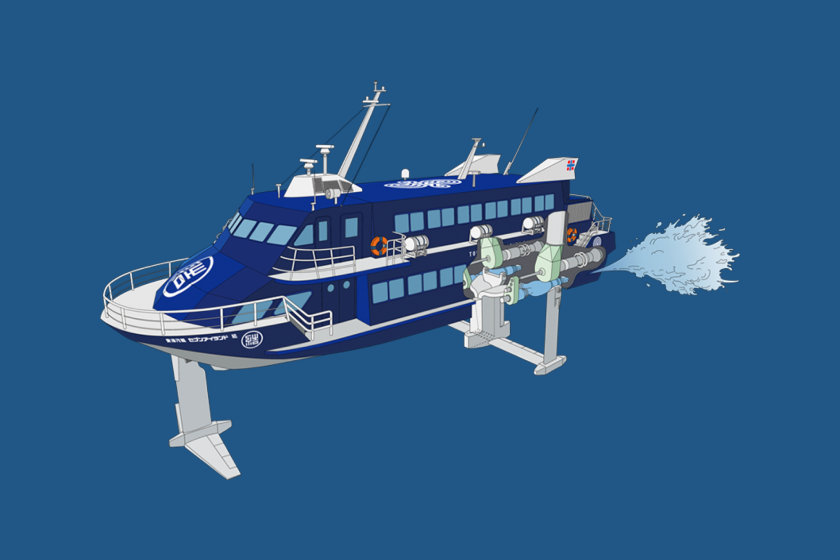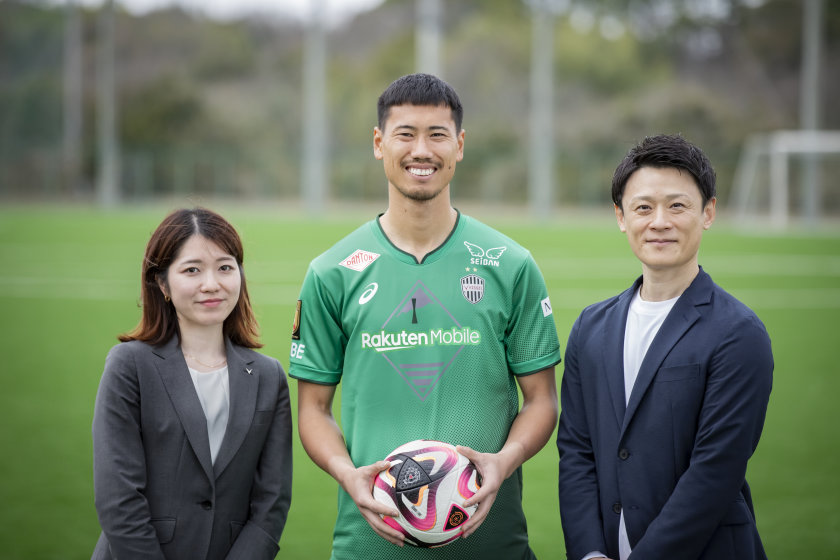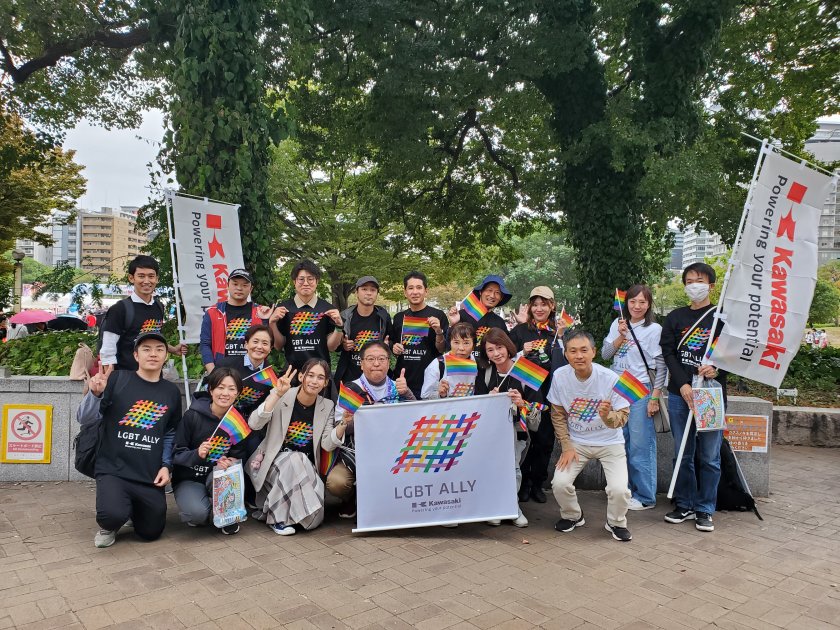Making What People Continue to Want: Toys and Helicopters Tomy × Kawasaki – Special Interview with Developers

In April 2022, Tomica, a long-selling brand of diecast mini-cars by Tomy Company Ltd., popular with children and parents across three generations, released a new web anime and toy series called TOMICA Heroes Jobraver – Specially-equipped combined robot. The theme for the series is working vehicles. The BK117 D-3 helicopter developed by Kawasaki has also been added to the lineup. As part of this collaboration, we invited Mr. Yuta Takagi, a planner/developer in charge of the Jobraver series, and Mr. Takuya Murahashi, a designer/developer who worked on the BK117 D-3, to share their thoughts on product development and what makes their work interesting.
Note: We take steps to prevent the spread of infection, including mask wearing and social distancing, when carrying our interviews and photography.

TOMICA Business Group, Brands Business Division,
Tomy Company Ltd.-TAKARA TOMY-
Loved to draw pictures, and show them to people, from a young age, following this passion to arrive at a job in the toy industry. Joined Tomy Company as a new graduate in 2015. Experienced marketing at the company and then moving on to planning and development work.
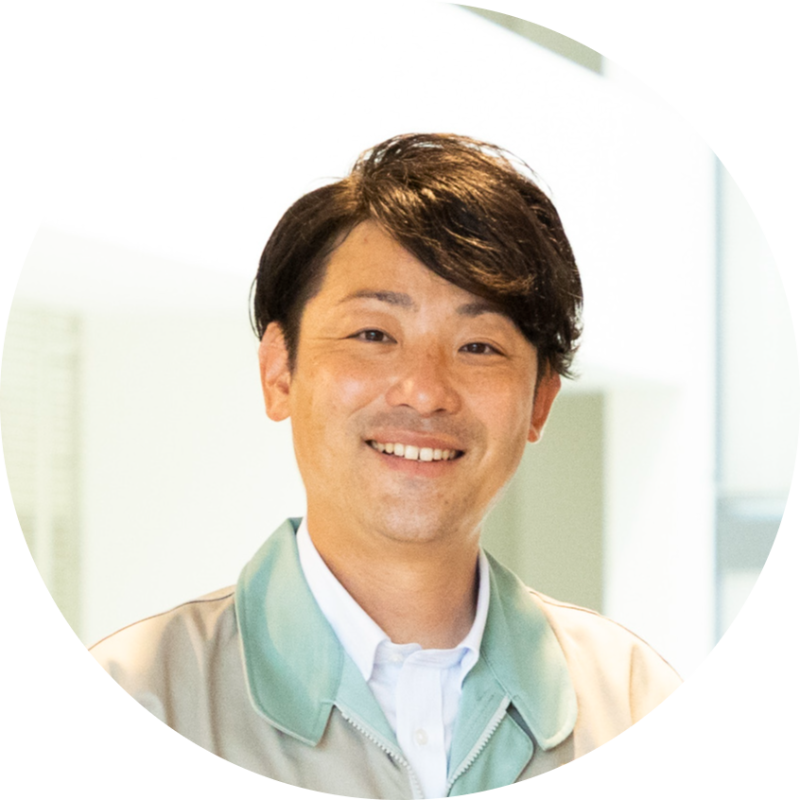
Helicopter Project Engineering Department,
Helicopter Project Division, Aerospace Systems Company,
Kawasaki Heavy Industries, Ltd.
Joined a production equipment design company after graduating from university. After moving to Kawasaki, he now works on the design and development of BK117 series drive system in the Helicopter Project Engineering Department.
Two developers, connected by “working vehicles”
Please start by introducing yourselves.

I joined Tomy as a new graduate in 2015, and I’m currently working on product planning and development in the Tomica Business Division. The toy industry was my first choice when I was looking for a job. From a young age, I have always enjoyed drawing pictures and having people look at them, and because of that formative experience, I may have wanted to find a job where I’d be able to create things that make people happy.

I joined Kawasaki mid-career, about ten years ago. Prior to that, I worked for another company designing production equipment for factories, but at that time I never got to see the equipment we designed firsthand, so I couldn’t feel the impact of my work in the field. I wanted to work at a company that makes the actual products. So I decided to change jobs, and now I’m working on maintenance design and development for the BK117 series.
Today we’re here to talk about the commercialization of Kawasaki’s BK117 D-3 helicopter as a new addition to the Jobraver series. Mr. Takagi, could you introduce Jobraver for us?

Sure. Jobraver is based on the theme of “working vehicles.” Not only do they look like real working vehicles, but they also transform into “Jobravers” when combined with working robots called “Jobroids.” We designed the series so that the robots and the vehicles go together, and function in accordance with the characteristics and capabilities of the vehicles. Likewise, the toy products can also be played with by combining the vehicles with the robot figures.
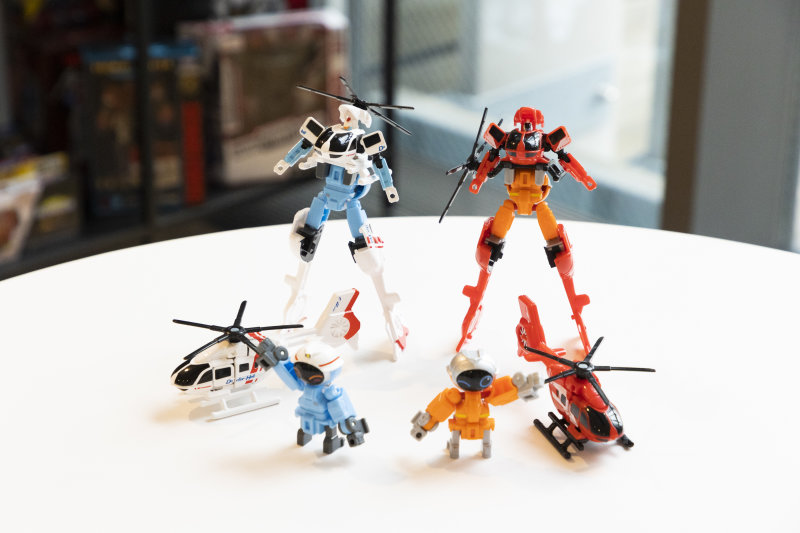

You also have a web anime, TOMICA Heroes Jobraver – Specially-equipped combined robot, which features various working vehicles and Jobroids. Up to now, the series has featured police cars, fire engines, and so on, but when I heard that Kawasaki’s BK117 D-3 would be joining the lineup, I was surprised. The BK117 D-3 helicopter serves a variety of purposes, and in the Jobraver series, there are two products: an emergency medical service (EMS) helicopter and a firefighting helicopter.

That’s right. In the anime, the helicopter functions as an EMS helicopter that saves lives, and as a firefighting helicopter used during disasters. Since the EMS helicopter and firefighting helicopter Jobravers work in very different ways, we also had to fine-tune the personalities of the Jobroids that operate them, and working on all those details was really interesting.
Toy development allows unlimited scope for detail
Mr. Murahashi, as a designer, how did you feel when you first saw the BK117 D-3 Jobravers?

When I first saw the finished models with my colleague, I remember how happy we all were. Everyone was like, “Oh wow, it’s the BK117 D-3!” It had really taken on the features of the BK117 D-3 in the form of a robot.

We took great care to stay as faithful as possible to the original. We were especially careful about the slim shape of the helicopter body around the tail. It’s ever so slightly thicker than the form of the original BK117 D-3. This is because we need to make the toys safe, so we made it difficult to snap, and difficult to break. We’re trying to strike a balance between ensuring safety and remaining faithful to the original BK117 D-3.
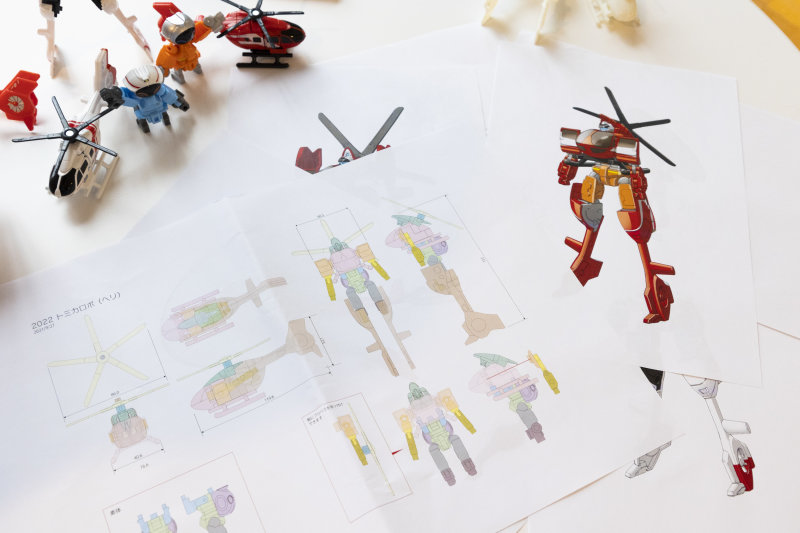

I see. That kind of attention detail may be unique to the job of planning and developing toys. Apart from that, what other aspects do you focus on during your everyday work as a designer?

Planning and development of toys allows unlimited scope for detail. As I mentioned just now with reference to the BK117 D-3, safety is important, but as long as it’s safe, we have the freedom to do whatever we want. As well as the toy itself, we take steps to pep up the product in any way we can, for example, with the package design that people see on display in the shop, and even the design of 2D codes linked to customer questionnaires in places where they don’t stand out.

That’s really interesting!

Whether you’re working on the big details that define how the toy is played with and enjoyed, or adding a minor touch that alone wouldn’t really have an impact on sales, being able to say, “Let’s try that!” and add in those details, that makes the work interesting I guess.
Development goes on, even after delivery
Mr. Murahashi, too, what did you focus on when working on the BK117 D-3?

The BK117 D-3 is an upgraded model of its predecessor, the BK 117 D-2. We made improvements in areas where we had received requests from clients, focusing onmaintainability and payload. Of particular interest are the rotor parts known as the “blades.” The previous model had four blades, but this time we were able to reduce vibration by having five blades instead of four. The BK117 D-3 can fly comfortable without the vibration absorbing device known as the “pendulum,” which was included up to the BK117 D-2 model.

So more blades means less vibration.

Yes. But it’s difficult because more is not necessarily better. When developing the helicopters, we put a lot of value on “optimization.” With safety as our top priority, we test the models over and over again, while considering the needs of the client, the cost, and various other factors, and we look for the point that is just right.


We’re both designing products, but this might be a difference between working on toys and working on helicopters.

You’re right. Like everyone else who’s involved in manufacturing aircraft, as someone who designs vehicles that are responsible for protecting people’s lives, ensuring safety in flight is always the number one priority. So, what I’m focusing on in the course of my work is not so much my own values and preferences but safety standards. Also, before taking on the challenge of a new product or method, we also need to carefully determine whether adequate safety can be confirmed. So when developing the products it’s important to focus on accumulating technologies that meet safety standards, gradually and steadily.

So your job entails working with the people who’ve been involved in developing the helicopters so far, and building up the technologies together.

That’s right. Strangely enough, when we finish developing a new helicopter model, that’s not the end of the story: The development process continues as we work to improve the functions after delivering the product to the customer.

What do you mean?

I don’t mean that we supply our customers with unfinished goods, of course—all the products will have already met the required standards. But we continue to develop the helicopters after delivery, as well, by looking at whether anything can be done to improve them. For example—and this applies to all kinds of aircraft, not only helicopters—to ensure safety you begin by restricting the use time of the parts in line with operating standards that strictly set on the safety side, and then you update those standards once the aircraft is in operation. The use time of the parts is configured after endurance tests, but the testing continues to be conducted even after the aircraft go into operation, and in some cases the use time is extended. We continue to update the manuals and methods of use so that, over time, the aircraft can move closer and closer to the ideal form for the customer while it is in operation. The great thing about this job is that development goes on, even after delivery.
Creating things that make people happy. A common source of satisfaction for product developers.
Could both of you tell us what you find rewarding about being involved in product development?

The reason I chose this job was that I wanted to feel the impact of my work in the field, so seeing that with my own eyes is the most rewarding thing for me. Or, maybe that when I’m walking outside and I hear the sound of a helicopter, I immediately look up at the sky. That makes me think about the aircraft I’m involved in. Like the ones I see in the sky, the helicopters I work on are also providing a service for people. And knowing that the work I do is contributing to that is rewarding for me.

I’m happy when I see the products I’ve worked on serving their purpose. The thing that’s most worthwhile for me is to see children playing with the toys and feeling happy. I feel like the ideas and passion I put into the products are being appreciated.

Although the products we make are used by different people and in different places, seeing the fruit of our efforts in action may be a common source of satisfaction for product developers.


That’s true. As far as Jobraver is concerned, the theme is working vehicles, so the product is more than just the toy itself. The real BK117 D-3 exists, and the reason why children want the toy is that they see the BK117 D-3 in the air, or on the news. I’d like to ask Kawasaki and Mr. Murahashi, to bring out more and more vehicles in the future!

Yes, we’ll do our best! The Tomica series continues to be popular across the generations. Like this unbroken line, I hope that in the future our company will also develop even better products.





